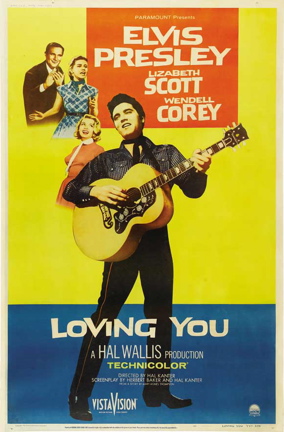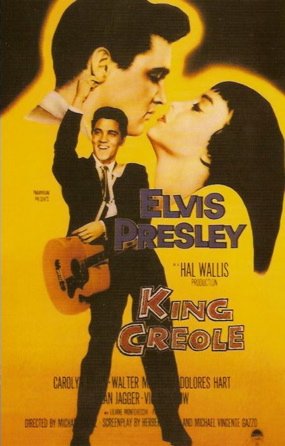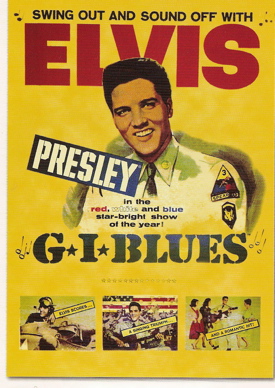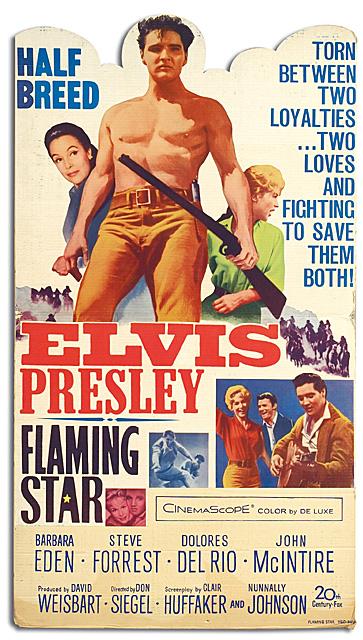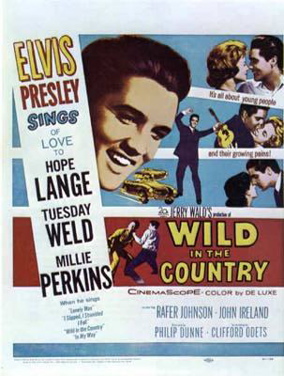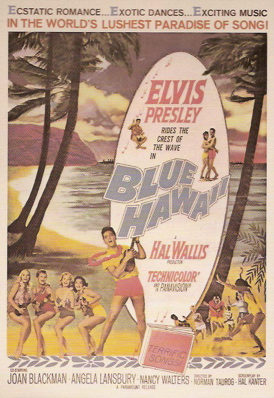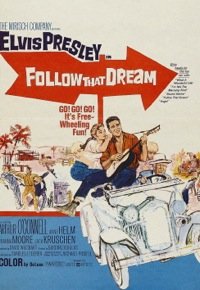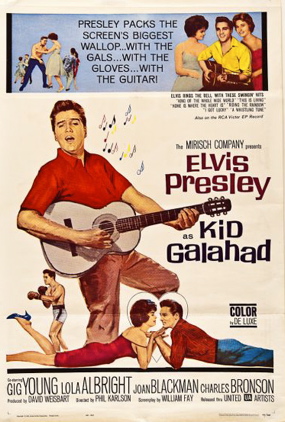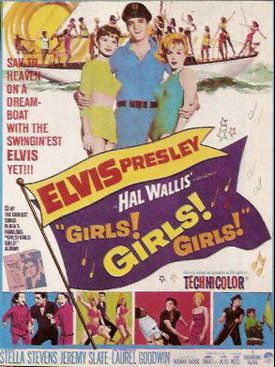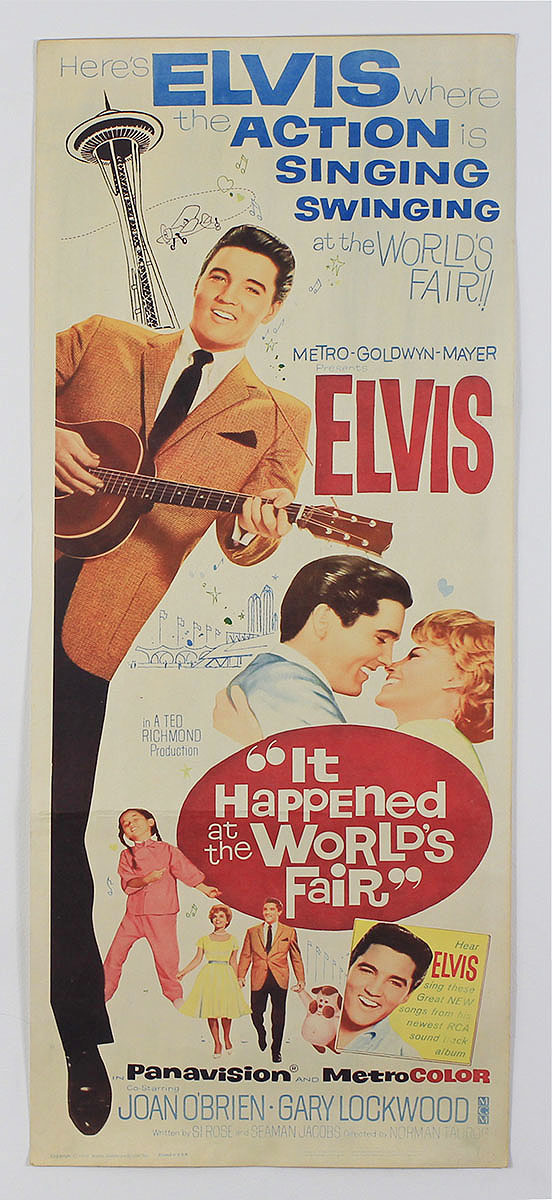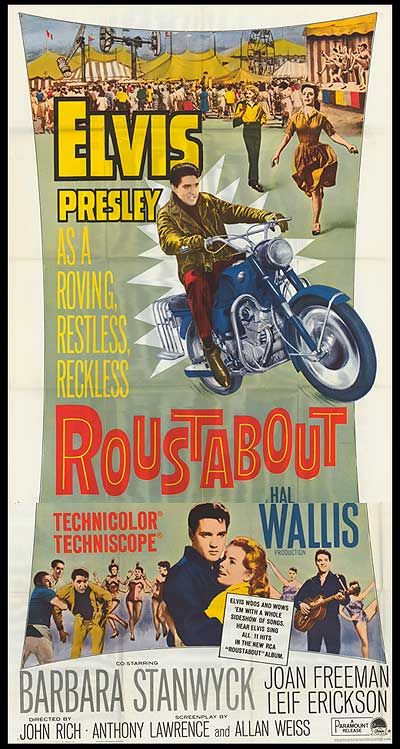Elvis History Blog
Colonel Parker's Contracts Kept
Elvis Working in Hollywood
In November 1955, Tom Parker was not yet Elvis Presley’s legal manager. He wouldn’t achieve that goal until four months later. But Parker already had big plans in mind for the 20-year-old rock ’n’ roll phenom. On November 14, 1955, the Colonel informed Harry Kalcheim at the William Morris Agency in New York that he was “interested in making a picture with this boy.” From that simple initial inquiry eventually grew the remarkable and controversial Hollywood career of Elvis Presley.
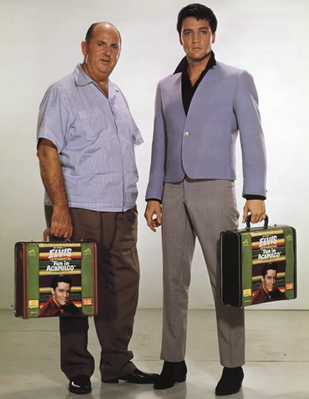
Over the following 16 years, Presley would appear in 31 theatrical movies and 2 documentary films. While Elvis toiled before the cameras of seven different Hollywood studios, Colonel Parker did the contractual work behind the scenes. Between 1956-1972, Parker negotiated 16 motion picture contracts for Elvis. In arriving at those agreements, the Colonel utilized his unique “skill set” of tough negotiating techniques, combined with occasional shady maneuvers, to maximize Elvis’ income (and his own). Laying that backstory aside for now, let’s take a brief look at the details of the 16 contracts that Parker parleyed for his client. Peter Guralnick and Ernst Jorgensen’s “Elvis: Day by Day” is the main source for the following information.
Parker didn’t have to sell Elvis to Hollywood. Instead, Hollywood came looking for Elvis in the form of Paramount producer Hal Wallis. After seeing Elvis on the Dorsey Brothers national TV program in February 1956, Wallis quickly arranged a screen test for Presley in late March. Convinced that Elvis would lure a multitude of teenagers into movie theaters, Wallis offered the singer a movie contract on April 2. Wallis and Parker then got to work hammering out the details.
Contract #1: Paramount | April 1956
Finalized on April 25, 1956, the contract was for one picture with studio options for six more. The deal was to pay Elvis $15,000 for the first movie, $20,000 for the second, $25,000 for the third, and so on, culminating in $100,000 for the seventh one. Parker would be allowed to contract with another studio for one other Presley film per year. Two films, Loving You (1957) and King Creole (1958), would be made under this contract. In January 1957, Parker cajoled Wallis into paying Elvis a $50,000 bonus on top of his $15,000 salary for Loving You. In November 1957, the Colonel got Wallis to pay Elvis $30,000 in expenses and a $50,000 bonus to go with his $20,000 fee for King Creole.
Contract #2: 20th Century Fox | August 1956
Unable to find a suitable script for Elvis, Wallis waived his contractual right to produce Presley’s first movie. Parker moved quickly to make a deal with 20th Century Fox. Presley’s star had risen considerably since the Paramount contract was signed, and so the Colonel was in a position to ask for a much higher fee for his client. The contract called for Elvis to receive $100,000 and costar billing for his first film, Love Me Tender. The contract gave Fox an option for two more films at $150,000 and $200,000. In October 1958, Parker renegotiated Elvis’ fee for the two optional films up to $200,000 and $250,000. The two option pictures made under this contract were Flaming Star (1960) and Wild in the Country (1961).
Contract #3: Metro-Goldwyn Mayer | February 1957
Exercising his right under the existing Paramount contract to one outside Presley movie per year, Parker came to terms with MGM on a single-film deal. Elvis was to receive $250,000 in salary for Jailhouse Rock (1957). Also, for the first time, the Colonel got a 50% share of the film’s profits for Elvis written into the contract.
Contract #4: Paramount | October 1958
The 1956 Paramount contract was completely rewritten. For his first film after leaving the army, Elvis was to receive $175,000 (a $150,000 raise over what the previous contract allowed). Wallis got options for three more films, at $125,000, $150,000, and $175,000 “against 71⁄2% of gross receipts after the film has earned out.” Only G.I. Blues (1960) was made under this revised contract.
Contract #5: United Artists | November 1960
Colonel Parker negotiated a two-picture deal with the Mirisch Brothers production company. It would pay Elvis $500,000 and 50% of the profits for each movie. Hal Wallis had the right to override the deal by matching its financial terms, but he declined to do so. Follow That Dream (1961) and Kid Galahad (1962) were produced under this contract.
Contract #6: Paramount | January 1961
Wallis agreed to rewrite the 1958 Presley contract. It became a five-picture deal with Elvis getting $175,000 for each of the first three films and $200,000 apiece for the last two. The five movies completed under this contract were Blue Hawaii (1960); Girls! Girls! Girls! (1962); Fun in Acapulco (1963); Roustabout, (1964); and Paradise, Hawaiian Style (1966). Later, a bonus of $90,000, to be split evenly between Elvis and the Colonel, was added for the last film.
Contract #7: MGM | January 1961
Just a few weeks after completing the five-picture Paramount deal, Colonel Parker obligated Elvis to do four movies for MGM. The finances were the same for all the films. Elvis’ salary would be $400,000 per picture, plus $75,000 in general expenses and $25,000 for musical expenses. After MGM recouped $500,000, Elvis would receive 50% of the profits. The four films made under this contract were It Happened At the World’s Fair (1963), Viva Las Vegas (1963), Kissin’ Cousins (1964), and Girl Happy (1965).
Contract #8: Allied Artists | November 1963
Colonel Parker and the struggling Allied Artists company agreed to a one-picture deal that would pay Elvis $600,000 plus $150,000 in expenses and 50% of the profits. The contract also put a ceiling on production costs at $1,500,000. Thus, Elvis’ compensation package of $750,000 would be at least half of the picture’s budget. The profits from Tickle Me in 1965 helped keep Allied from going bankrupt.
Contract #9: United Artists | December 1964
Colonel Parker entered into another two-picture deal with United Artists, which had produced Follow That Dream and Kid Galahad in 1962. Under this new agreement, Elvis would receive $650,000 each for the two films, which became Frankie and Johnny (1966) and Clambake (1967).
Contract #10: MGM | December 1964
Parker completed a new agreement with MGM for three more pictures. It called for Elvis to receive $1 million for the first film. A quarter of that was to be paid to Elvis at $1,000 a week over five years. For the other two movies, Elvis was to receive $750,000 each. In addition, the contract gave Presley 40% of the profits from all three films. Made under this pact were Harum Scarum (1965), Spinout (1966), and Double Trouble (1967).
Contract #11: MGM | January 1966
Although only one picture had been made under the December 1964 contract, the MGM agreement was extended to include four more films. Elvis’ fee was set at $850,000 for each film with profit sharing increased to 50%. Titles produced under this agreement were Speedway (1967), Stay Away, Joe (1968), Live a Little, Love a Little (1968), and The Trouble With Girls (1968).
Contract #12: Paramount | April 1966
With work under the 1961 Paramount contract completed, Parker entered into contentious discussions with Hal Wallis over a new contract for Elvis. The Colonel wanted $500,000 per picture for his client, with 20% of the profits. After seven months of wrangling over details, Wallis finally agreed to those figures. However, Wallis, who had become increasingly disappointed with Elvis’ work, made the agreement for one picture only. There were no options. Easy Come, Easy Go (1967), made under this contract, was Elvis’ last film for Paramount.
Contract #13: National General | November 1967
With Paramount out of the picture and only two more films left to do for MGM, Parker scouted other studios to get Elvis work. He lined up a one-picture deal with National General that would pay Elvis $850,000 and 50% of the profits. Parker also got from National something that Wallis wouldn’t give him — a commitment to a non-singing role for Elvis in Charro! (1969).
Contract #14: NBC-Universal | January 1968
On January 12, 1968, NBC Vice President Tom Sarnoff announced a deal with Colonel Parker and Elvis had been reached for Presley to make a television special. Given little note in the anticipation of Elvis’ return to TV was his commitment under the contract to make a feature film for NBC’s subsidiary company, Universal Studios. Elvis received $850,000 for the movie, Change of Habit (1969), and another $25,000 for the music in the film.
Contract #15: MGM | April 1970
Colonel Parker worked out a deal with MGM to have Elvis’ Las Vegas show filmed for a documentary movie. The agreement paid Presley $500,000. Elvis: That’s the Way It Is was released in November 1970.
Contract #16: MGM | March 1972
Just a month prior to Elvis’ fifteen-city tour in April 1972, Parker quickly put together a deal with MGM for another documentary. Apparently, the deal was not completely worked out when filming began, but Elvis reportedly received $1 million for his thirty-third and final motion picture, Elvis on Tour.
Certainly, the unprecedented salaries, expenses, and bonuses Colonel Parker won for Elvis in the 16 Hollywood contracts he negotiated were impressive. It’s important to keep in mind, however, that throughout Presley’s career, his manager received 25% of his acting income, as dictated in their personal contract. If a studio contract called for Elvis to receive $500,000 for a film, Parker took $125,000, leaving his client $375,000. Actually, it was less than that, since Colonel Parker deducted all of his expenses from Elvis’ share. — Alan Hanson | © 2012
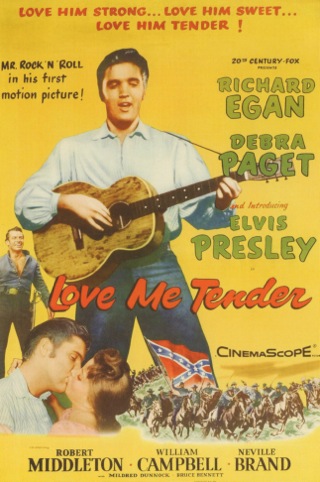
"Certainly, the unprecedented salaries, Colonel Parker won for Elvis in the 16 Hollywood contracts he negotiated were impressive. It’s important to keep in mind, however, that throughout Presley’s career, his manager received 25% of his acting income, as dictated in their personal contract."
